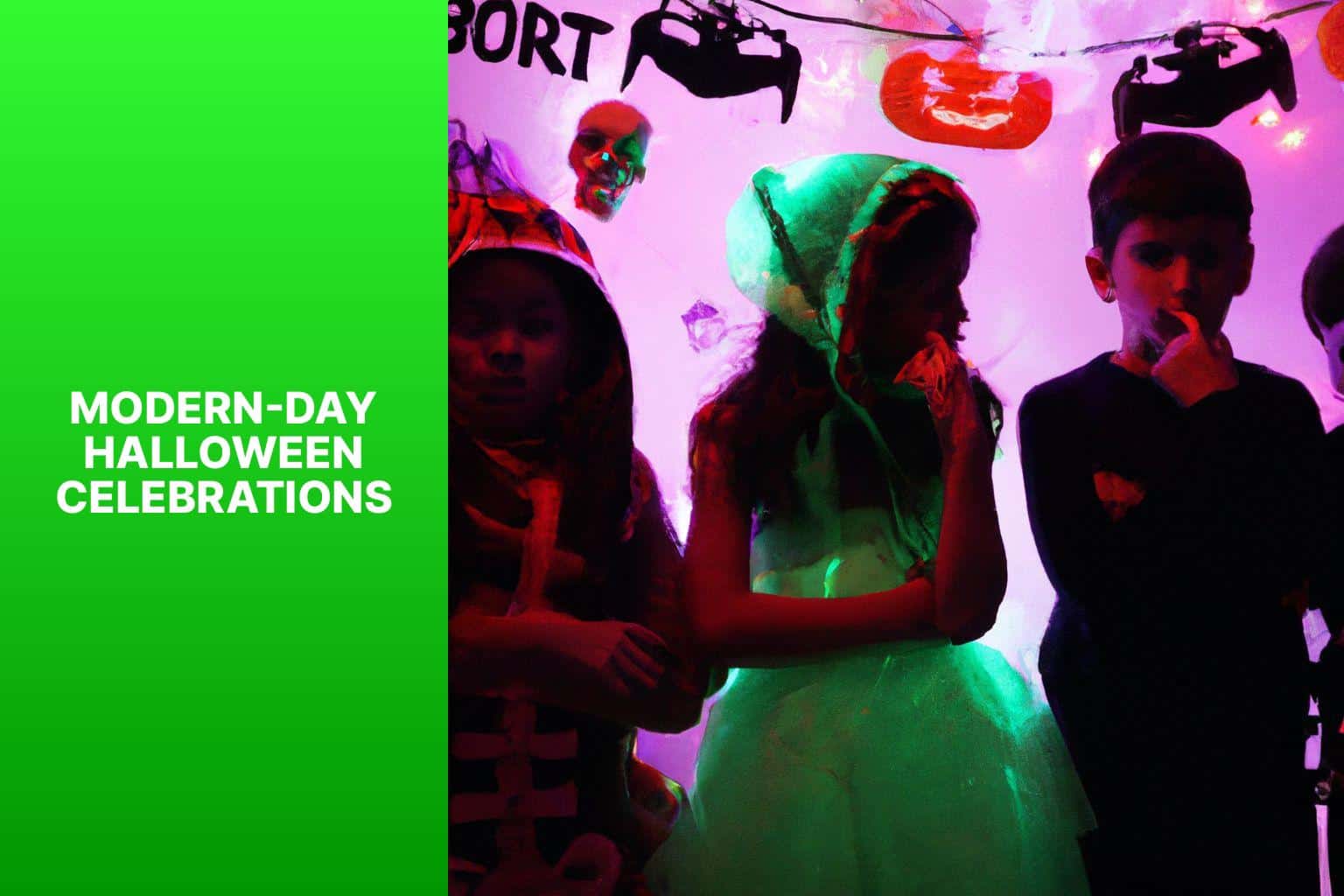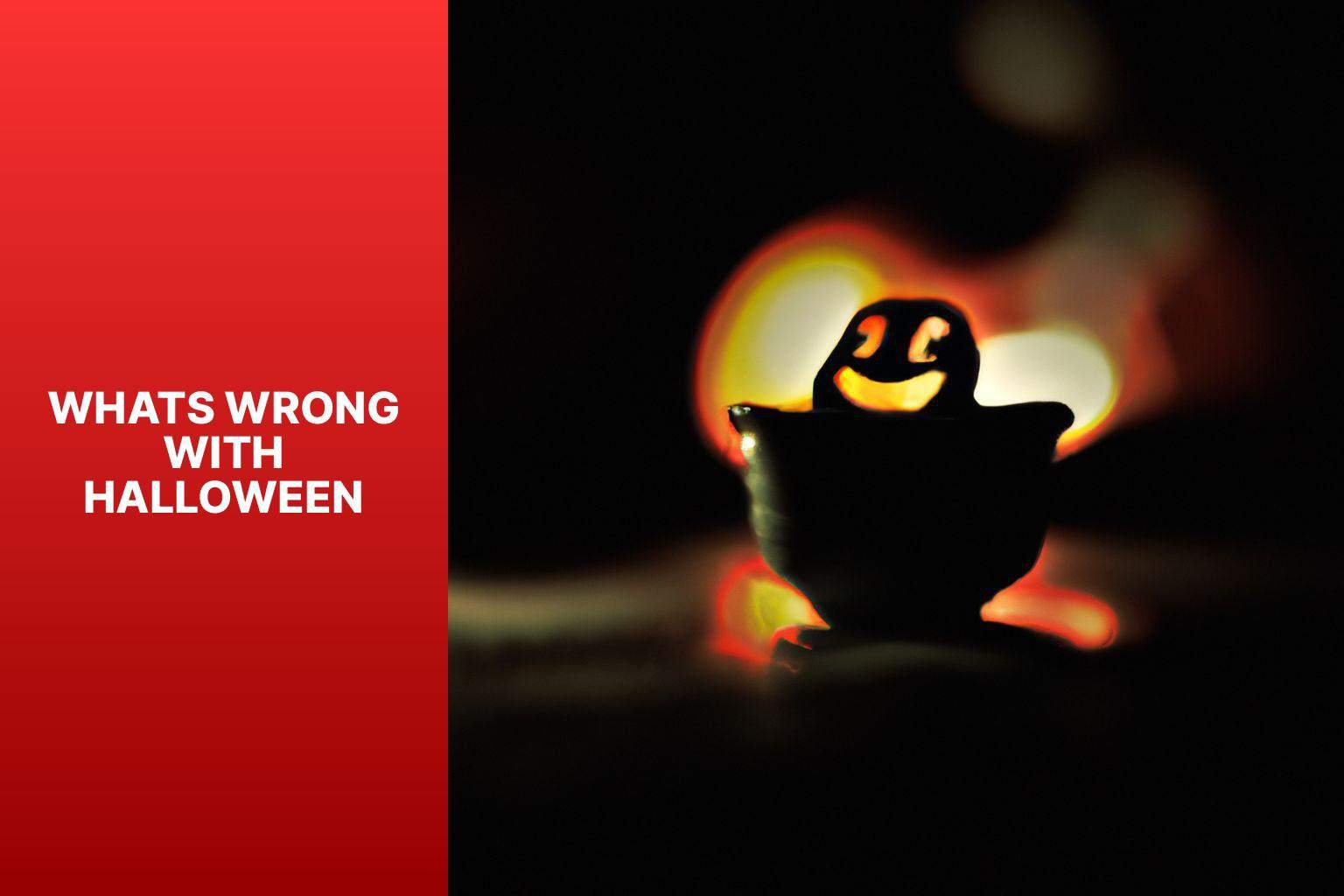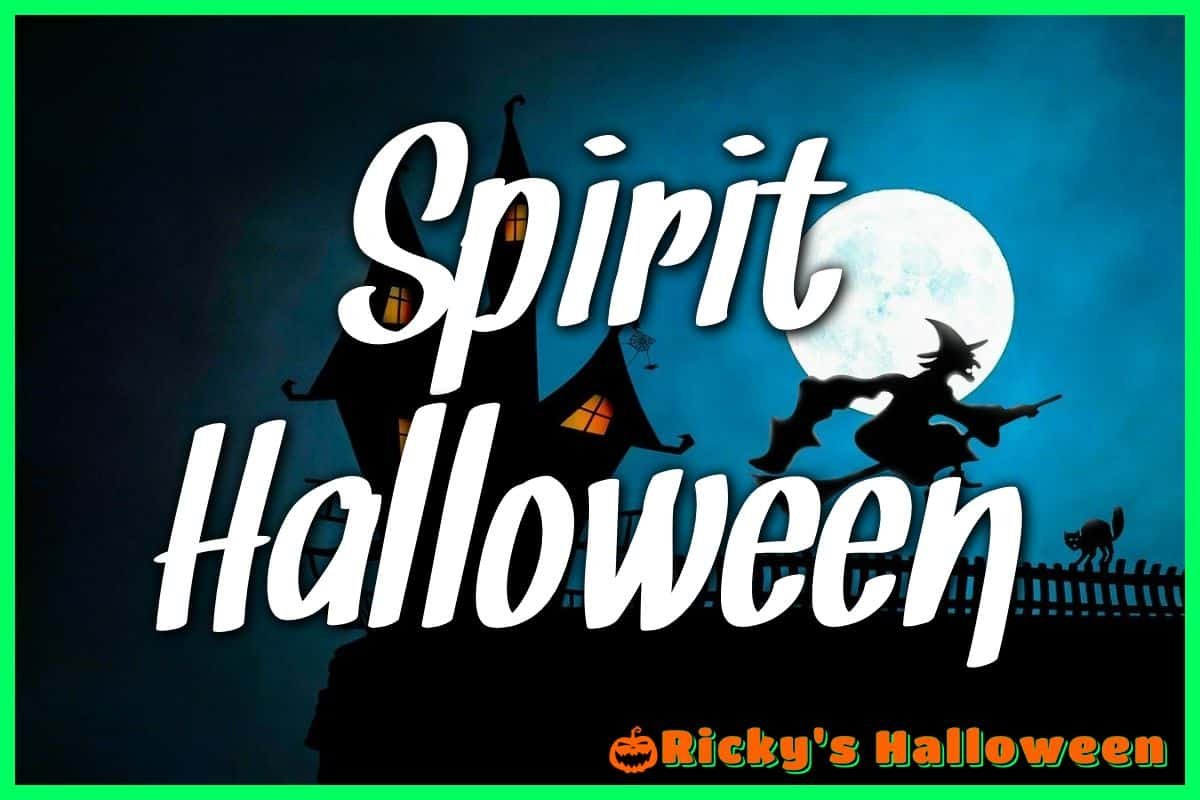Halloween, a holiday celebrated on the 31st of October, has a rich history and cultural significance that dates back centuries. Understanding the historical origins and pagan roots of Halloween is important to grasp the traditions and practices associated with this holiday. It is also essential to acknowledge the controversies and criticisms that surround Halloween in modern times. In this article, we will delve into the different aspects of Halloween, from its historical origins to modern-day celebrations, and explore the controversies it has faced. We will also explore alternatives to traditional Halloween celebrations that provide a different perspective for those who may have reservations about participating. By examining the different facets of Halloween, we can gain a comprehensive understanding of what’s wrong with Halloween and explore alternative ways to celebrate the season.
Key takeaway:
- Religious objections: Halloween faces criticism from religious groups who believe it promotes pagan and occult practices.
- Safety concerns: Halloween poses safety risks for children due to potential accidents, dangerous costumes, and unsafe conditions in neighborhoods.
- Cultural appropriation: Some argue that Halloween costumes can perpetuate stereotypes and cultural appropriation, disrespecting various cultures and traditions.
Historical Origins of Halloween
The historical origins of Halloween date back to ancient Celtic traditions. It originated from the festival of Samhain, which marked the end of the harvest season and the beginning of winter in Celtic culture. During this time, the Celts believed that the boundary between the living and the dead was blurred, and the spirits of the dead would roam the earth.
To ward off these roaming spirits, the Celts would light bonfires and wear costumes. They also believed that the presence of these spirits made it easier for their priests, the Druids, to predict the future. Over time, as Christianity spread, the festival of Samhain became merged with All Saints’ Day and All Souls’ Day, resulting in the creation of Halloween.
To give your Halloween celebrations a historical twist, consider incorporating traditional Celtic elements like bonfires, costumes, and storytelling about the spirits of the dead. This can help you better understand the historical origins of Halloween and make your festivities more meaningful.
Pagan Roots of Halloween
Unearthing the fascinating origins of Halloween, we delve into the enchanting realm of its Pagan roots. From the ancient Samhain Festival to the mystical Celtic beliefs and traditions, each sub-section will unravel the mystical tapestry that gave birth to this widely celebrated holiday. Prepare to be captivated by the historical significance and the folklore that surrounds the evolution of Halloween as we explore its deep and magical connections to ancient rituals and spiritual practices.
Samhain Festival
The Samhain Festival is the origin of Halloween. It was a Celtic festival on October 31st, marking the end of the harvest season and the start of winter. The Celts believed this was when the boundary between the living and the dead was thinnest.
The festival involved customs and rituals. Bonfires were lit to keep away evil spirits and provide warmth. People wore costumes made of animal hides to hide from spirits. They also offered food and drink to the deceased and set a place at the table for their ancestors.
The festival was closely connected to nature. People did divination and fortune-telling to learn about the future. They believed it was easier to communicate with the spirit world during Samhain.
Over time, the Samhain Festival merged with Christian observances, resulting in Halloween. Many traditions, like bonfires and costumes, continue to be part of Halloween today.
Celtic Beliefs and Traditions
The origins of Halloween are closely tied to Celtic beliefs and traditions. The ancient Celtic festival of Samhain, which took place on October 31st, held significant importance for the Celts. They believed that during this festival, the line between the realm of the living and the dead would blur. It was believed that the souls of the deceased would return to earth during this time, either to play pranks or seek revenge.
To protect themselves from these roaming spirits, the Celts would light bonfires and dress in costumes. This was done in the hope of warding off any malevolent spirits. The Celts also believed that the presence of these spirits made it easier for their priests, known as Druids, to make predictions about the future. These predictions were seen as vital in preparing the community for the upcoming dark winter months.
Another significant aspect of Celtic beliefs during this time was the offering of food and drink to appease the spirits. It was believed that by making these offerings, the Celts would gain protection and good fortune. These traditions and practices continue to shape the celebration of Halloween today, showcasing the lasting influence of Celtic beliefs.
Understanding the Celtic roots of Halloween provides us with a deeper understanding of the historical and cultural meaning behind this holiday. The customs and traditions that have been passed down through generations connect us to our ancestors and serve as a reminder to honor our past. So, when you partake in activities such as carving pumpkins or dressing in spooky costumes, remember the ancient Celtic beliefs and traditions that have shaped the Halloween celebration that we hold dear.
Modern-Day Halloween Celebrations

Photo Credits: Rickyshalloween.Com by Aaron Martin
From trick-or-treating to costume parties, haunted attractions to Jack-o’-lanterns, this section dives into the thrilling and spooktacular aspects of how we celebrate Halloween today! Unearth the curious traditions, creepy costumes, and pumpkin-carving rituals that make this holiday so delightfully eerie. Prepare to be haunted by the captivating history and bewitching festivities that shape the modern-day Halloween experience. So, grab your broomsticks and join us on this hair-raising journey into the world of Halloween celebrations!
Trick-or-Treating
Trick-or-treating is a beloved Halloween tradition known for its popularity among children. It involves kids going door-to-door in their neighborhood, dressed up in costumes, and uttering the famous phrase “trick or treat” to homeowners. In return, they receive an assortment of candy and sweets. This enjoyable activity not only allows children to have fun but also enables them to connect with their community. To ensure the safety of the children, parents often accompany them during the trick-or-treating adventure. Costumes play a crucial role in this tradition as they allow children to transform themselves into their favorite characters or showcase their creativity.
Fun fact: Did you know that trick-or-treating originated in Ireland and Scotland and was initially called “guising“? Participants would dress up and visit houses, using their talents to perform songs or recite poems in exchange for food or coins. It wasn’t until the late 19th century that the practice of giving out treats became widespread in the United States.
Costume Parties
Costume parties, which are particularly popular during Halloween, are events where people gather and dress up in different costumes.
These parties provide a platform for attendees to showcase their creativity and self-expression through their chosen costumes.
Prior to the event, participants carefully plan and prepare their costumes in advance.
Costume parties can be hosted in various venues such as homes, clubs, or community centers, and they are known for their lively atmosphere with music, dancing, and vibrant festive decorations.
When it comes to costumes, participants have the option to either purchase store-bought outfits or unleash their creativity by designing their own unique ensembles.
One of the highlights of costume parties is the costume contests, where prizes are awarded to those with the most imaginative and creative costumes.
Some costume parties have specific themes, such as superheroes or movie characters, which adds an extra layer of excitement and fun.
Attending a costume party allows individuals to temporarily step into the shoes of someone else and experience a transformative and entertaining experience.
Haunted Attractions
Haunted Attractions are a beloved aspect of the Halloween season, drawing in crowds of people seeking a thrilling and hair-raising experience. These Haunted Attractions, such as haunted houses and trails, are meticulously crafted to both frighten and entertain visitors. They showcase elaborate sets, spine-chilling special effects, and skilled actors who skillfully don the garb of ghosts, monsters, and other eerie characters.
Participating in Haunted Attractions is not for the faint of heart, as it provides a surge of adrenaline and a tremendous amount of excitement. This is the perfect way to revel in the spirit of Halloween and enjoy the thrill of being scared. Many individuals derive immense pleasure from the fear and suspense that these attractions offer, relishing in the heart-pounding sensations.
Visiting Haunted Attractions is also a wonderful social activity that can be relished either individually or in the company of others. It becomes an unforgettable experience when shared with friends or loved ones, who can partake in the shared fright and delight. Some attractions go the extra mile by incorporating interactive elements, ensuring that visitors actively participate in the scares, heightening the enjoyment.
It is crucial to keep in mind that Haunted Attractions are ultimately a form of entertainment and should be approached responsibly. While they strive to create an environment that is genuinely hair-raising, these attractions are thoroughly regulated and adhere to strict safety standards. It is of utmost importance to closely follow any rules or instructions provided by the staff, guaranteeing both your safety and a delightfully gratifying experience.
To sum it up, Haunted Attractions have become an integral part of Halloween festivities for those desiring a spine-chilling and exhilarating encounter. Whether you relish the adrenaline rush or find pleasure in confronting your deepest fears, these Haunted Attractions hold the power to create lasting memories and deliver an incredibly gratifying experience.
Table:
Jack-o’-Lanterns
Jack-o’-Lanterns originated in Ireland, where they were carved into turnips or potatoes. Irish immigrants brought the tradition to the United States and discovered that pumpkins were better for carving. People hollow out pumpkins and carve faces into them, often with spooky or funny expressions. A candle or light source is placed inside to illuminate the design.
Originally, Jack-o’-Lanterns were carved to ward off evil spirits on Halloween night and guide lost souls. They also symbolized the harvest season. Jack-o’-Lanterns can be carved with various designs, from traditional spooky faces to intricate patterns and scenes. Some people prefer designs inspired by popular culture, while others opt for classic designs.
These carved pumpkins are commonly displayed on porches and windowsills, adding a festive and spooky feel to homes. They are also seen at Halloween parties and events. During the Halloween season, pumpkin carving contests and festivals are held, providing an opportunity for people to showcase their creativity and skills.
For those who prefer not to use real pumpkins, artificial or foam pumpkins can be carved and decorated in the same way. These can be stored and reused in future years.
Controversies and Criticisms of Halloween
Controversial and criticized, Halloween faces scrutiny from various angles. From religious objections to safety concerns, cultural appropriation, and over-commercialization, this section unveils the contentious aspects that surround this beloved holiday. Get ready to delve into the heated debates and explore the differing perspectives on the darker side of Halloween.
Religious Objections
Religious objections to Halloween are based on the belief that the holiday promotes pagan practices and goes against biblical principles. Some Christians argue that Halloween has its roots in pagan celebrations like the Samhain Festival and that participating in such activities is considered idolatry. The Roman Catholic Church and Protestant Reformation also have concerns about Halloween’s association with evil spirits and the promotion of fruitless deeds of darkness.
Religious objections to Halloween stem from biblical teachings and the desire to resist the devil’s schemes. The Bible encourages believers to be children of light and to avoid detestable ways. Christians are called to submit to God and purify their hearts from ungodly practices. Instead of celebrating Halloween, some religious groups choose alternative celebrations such as fall festivals that align with godly themes and promote thanksgiving offerings.
Safety Concerns
When it comes to Halloween, safety concerns must be at the forefront of everyone’s mind to ensure a fun and secure experience for all.
- Costumes: It is essential to use flame-resistant materials for costumes that are not too long, as this will prevent any potential tripping hazards. Adding reflective material or glow sticks to the costumes will greatly enhance nighttime visibility.
- Trick-or-Treating: The presence of a responsible adult is crucial when accompanying children during trick-or-treating. It is important to only visit well-lit houses and completely avoid homes without any lights.
- Candy: Before allowing children to indulge in their treats, it is vital to carefully inspect each piece to ensure its safety. Any unwrapped or suspicious-looking candy must be discarded, and it is strongly advised to avoid accepting homemade treats from strangers.
- Road Safety: Both drivers and pedestrians must remain vigilant and cautious during Halloween. Always utilize crosswalks and adhere to pedestrian signals when crossing the road.
- Decorations: To ensure the safety of everyone, it is crucial to keep candles and jack-o’-lanterns away from flammable materials. Placing them in a secure area, out of reach from children and pets, is highly recommended.
- Allergies: It is important to be mindful of food treats that may contain allergens. Consider offering non-food treats for children with allergies, as this will help create an inclusive and safe environment for all.
By prioritizing these safety concerns, everyone can enjoy a Halloween celebration that is both secure and memorable.
Cultural Appropriation
Cultural appropriation is a rather contentious and controversial issue that often arises during the Halloween season. This issue specifically pertains to the adoption or utilization of elements from a different culture without fully understanding or respecting their cultural significance. When selecting costumes or decorations, it is of utmost importance to carefully consider the potential implications and be mindful of the concept of cultural appropriation.
A prime example of cultural appropriation is the act of donning traditional clothing or accessories from a particular culture without truly comprehending their cultural significance. Such actions can be highly offensive and disrespectful to those individuals who hold these customs and traditions in great reverence. The usage of sacred symbols or traditional rituals as mere “props” or for the purpose of entertainment can effectively commodify and trivialize these deeply meaningful cultural practices.
To effectively avoid cultural appropriation, it is imperative to undertake thorough research and educate oneself about the specific cultural origins and meanings behind the elements that are being incorporated. Seeking permission and guidance from individuals who are part of that particular culture, as well as actively supporting artisans and businesses from that culture when making purchases, is always the best course of action.
By consciously being aware of the concept of cultural appropriation and making well-informed choices, Halloween celebrations can truly foster inclusivity, respect, and a sincere appreciation for the richness and diversity of all cultures. It is crucial to remember and honor the fact that cultural exchange should always be carried out in a manner that pays tribute to and demonstrates deep respect for the traditions, values, and historical significance of the culture being represented.
Over-Commercialization
The over-commercialization of Halloween has overshadowed its true significance and meaning. Companies have transformed this cultural celebration into a profitable industry by promoting the purchase of costumes, decorations, and candy.
Advertisements inundate us with messages to acquire the latest costumes, extravagant decorations, and excessive amounts of candy. This emphasis on consumerism takes away from the original essence of Halloween and transforms it into a materialistic occasion.
The over-commercialization of Halloween exerts pressure on families to overspend. Individuals feel compelled to keep up with trends and make lavish and costly purchases, which can be challenging for those on a limited budget.
This preoccupation with buying products and spending money diminishes the authentic spirit of Halloween, which should revolve around community, creativity, and tradition. Instead of promoting meaningful activities like carving pumpkins and organizing neighborhood gatherings, the focus solely revolves around consumerism.
To tackle this issue, it is crucial to acknowledge and resist the over-commercialization of Halloween. Instead, we should concentrate on the fundamental values of the holiday, such as spending quality time with loved ones, embracing creativity, and cherishing traditions. By doing so, we can reclaim the true essence of Halloween and derive joy from its simple pleasures.
Alternatives to Traditional Halloween Celebrations
Looking for alternative ways to celebrate Halloween? We’ve got you covered! In this section, we’ll explore unique ways to embrace the spirit of the season without traditional Halloween traditions. From engaging in Harvest Festivals to participating in Community Events and even trying out the fun-filled Trunk-or-Treat, there are plenty of exciting alternatives to make this Halloween season truly memorable. So, let’s dive in and discover the enchanting alternatives that await!
Harvest Festivals
Harvest festivals, also known as autumn festivals, are joyful occasions that commemorate the bountiful harvest of food and resources. These festive events not only showcase the rich cultural traditions but also play a vital role in fostering a sense of community among individuals. With the transition from the warm summer days to the cooler autumn season, these festivals serve as a delightful way to celebrate and appreciate the local produce. Harvest festivals offer valuable educational opportunities where attendees can learn about various aspects of agriculture and food cultivation. By incorporating fun-filled activities and traditional customs, these festivals create a vibrant and lively atmosphere that brings people closer to their cultural heritage.
Community Events
Community events are a fantastic alternative to traditional Halloween celebrations, providing a fun and safe environment for everyone in the community. These events bring people together and create a welcoming atmosphere that encourages inclusivity. Here are some examples:
– Community Halloween festivals: These festivals are filled with games, activities, and costume contests, allowing families to enjoy the holiday together in an inclusive environment.
– Trunk-or-Treat events: These events take place in designated areas or parking lots, where individuals or groups creatively decorate their car trunks and distribute candy to children. This ensures a safe environment away from busy streets.
– Community haunted houses: Local community groups or organizations organize and operate these haunted houses, providing visitors with a spooky experience. Often, the proceeds from these attractions go towards charitable causes.
– Pumpkin carving contests: These contests encourage individuals of all ages to showcase their creativity and compete for prizes. They promote artistic expression and foster a sense of community.
– Halloween parades: These parades allow people to dress up in costumes and proudly display their Halloween spirit as they march down the streets. Spectators can enjoy the festivities, which often include marching bands, floats, and candy.
Community events not only foster a sense of togetherness but also enable people to create lasting memories while celebrating Halloween. They offer a safe and enjoyable environment for individuals of all ages to participate in the holiday festivities.
Trunk-or-Treat
Trunk-or-Treat is a popular modern-day Halloween celebration. Participants gather in a designated area and decorate their car trunks in festive themes. Children then collect treats directly from the trunks.
There are advantages to participating in Trunk-or-Treat. It provides a safe environment for children to trick-or-treat and allows for social interaction among families and neighbors. Trunk-or-Treat also eliminates the need to go door-to-door, which can be time-consuming and physically demanding.
To make the most out of a Trunk-or-Treat event, arrive early to secure a good parking spot and give yourself plenty of time to set up your trunk display. Consider selecting a theme for your trunk to make it visually engaging for children. You can also incorporate educational or positive messages into your decorations, promoting literacy or kindness and friendship.
Frequently Asked Questions
What is the origin and meaning of Halloween?
Halloween traces its origins back to the ancient Celtic festival of Samhain, which marked the end of summer and the beginning of winter. It was believed that on this day, the line between the living and the dead became thin, allowing spirits to roam the earth. Over time, Halloween became a blend of Celtic traditions and Roman holidays like All Martyrs’ Day, later known as All Saints’ Day.
Why do some Christians reject celebrating Halloween?
Many Christians reject celebrating Halloween due to spiritual concerns. They see it as a merger of pagan customs with Christianity, which goes against God’s commands. Halloween often glorifies dark characters associated with death, Satanism, and the occult. Some Christians believe that the celebration is based on the false belief in an immortal soul, which is not supported by the Bible.
Is it wrong for Christians to participate in Halloween?
Christians have differing views on participating in Halloween. Some choose to avoid it completely, considering it a pagan holiday with spiritual implications. Others see it as a fun and harmless opportunity for children to dress up and enjoy activities like trick-or-treating. Ultimately, Christians have the freedom to decide whether to participate or not, but they should exercise discernment and seek the guidance of the Holy Spirit.
What are alternatives to celebrating Halloween for Christians?
For Christians who prefer not to celebrate Halloween, they often opt for Fall Festivals as a family-friendly alternative. These events can include games, food, and activities geared towards celebrating the season without the spiritual implications some associate with Halloween. Another alternative is celebrating Reformation Day, which commemorates the Protestant Reformation and rejects Catholic beliefs such as Purgatory.
How can Christians engage with their community during Halloween?
Some Christians choose to engage with their community during Halloween by practicing hospitality, getting creative with activities, reaching out to neighbors, and being prayerful and present. By using this holiday as an opportunity to show compassion and grace, Christians can make a positive impact and shine the light of Christ amidst the darkness often associated with Halloween.
What is the biblical perspective on celebrating Halloween?
The Bible does not directly reference Halloween, as it is a relatively recent Western custom. The Bible encourages Christians to avoid darkness and pagan customs. It also warns against engaging with deceiving spirits and advises believers to submit themselves to God and put on the armor of light. Christians should use biblical wisdom and knowledge to make informed decisions about whether or not to celebrate Halloween.
















